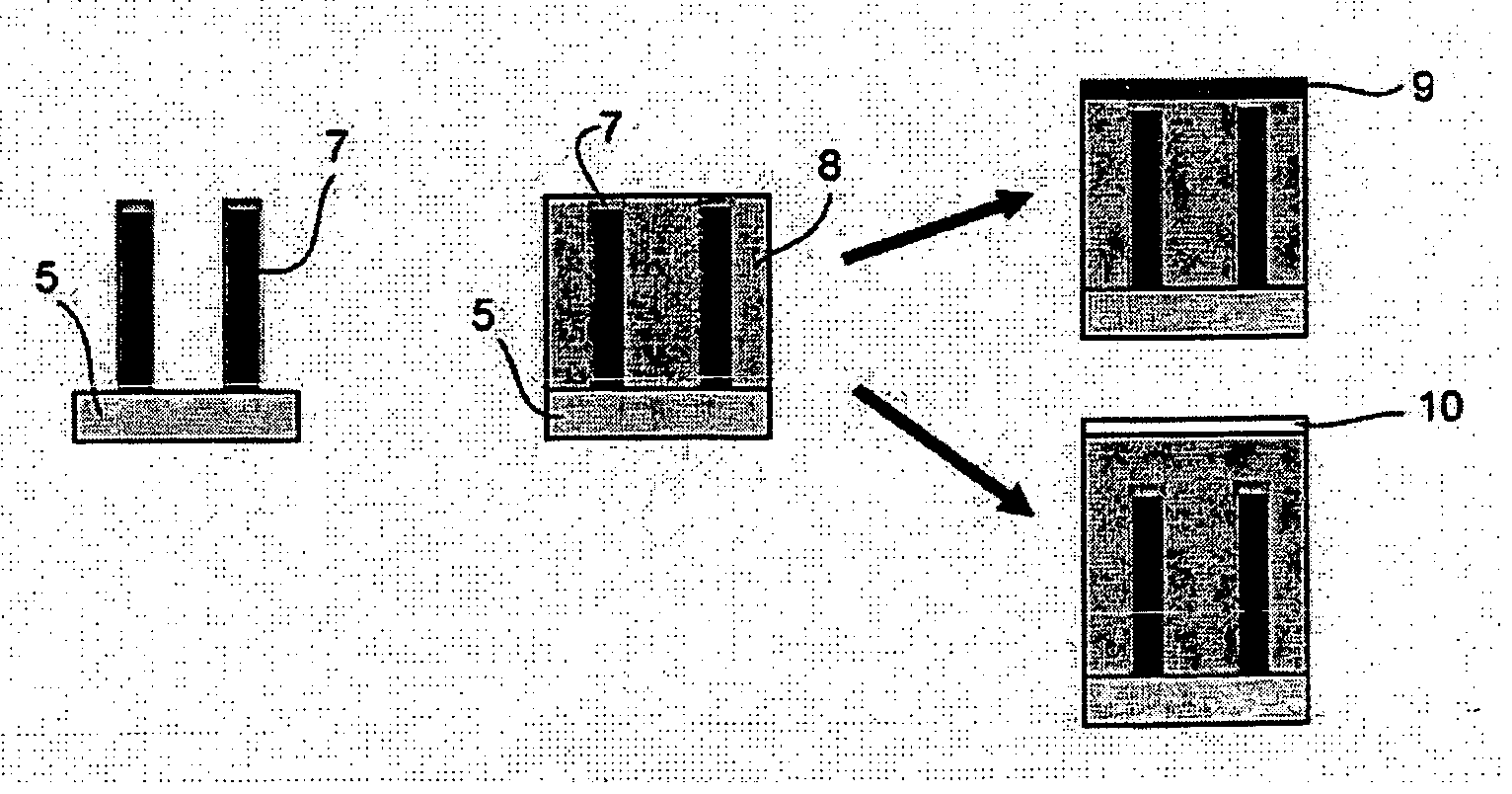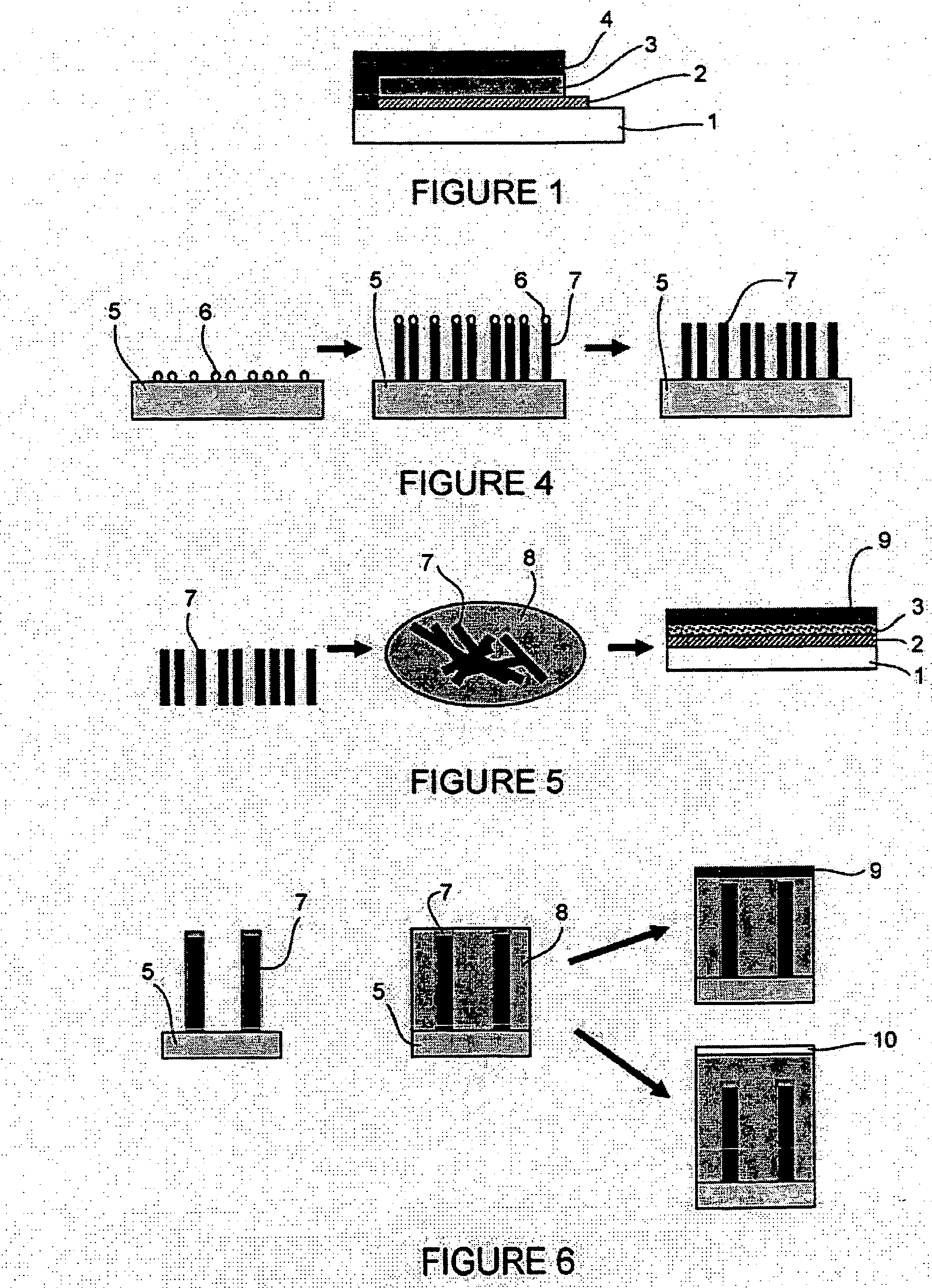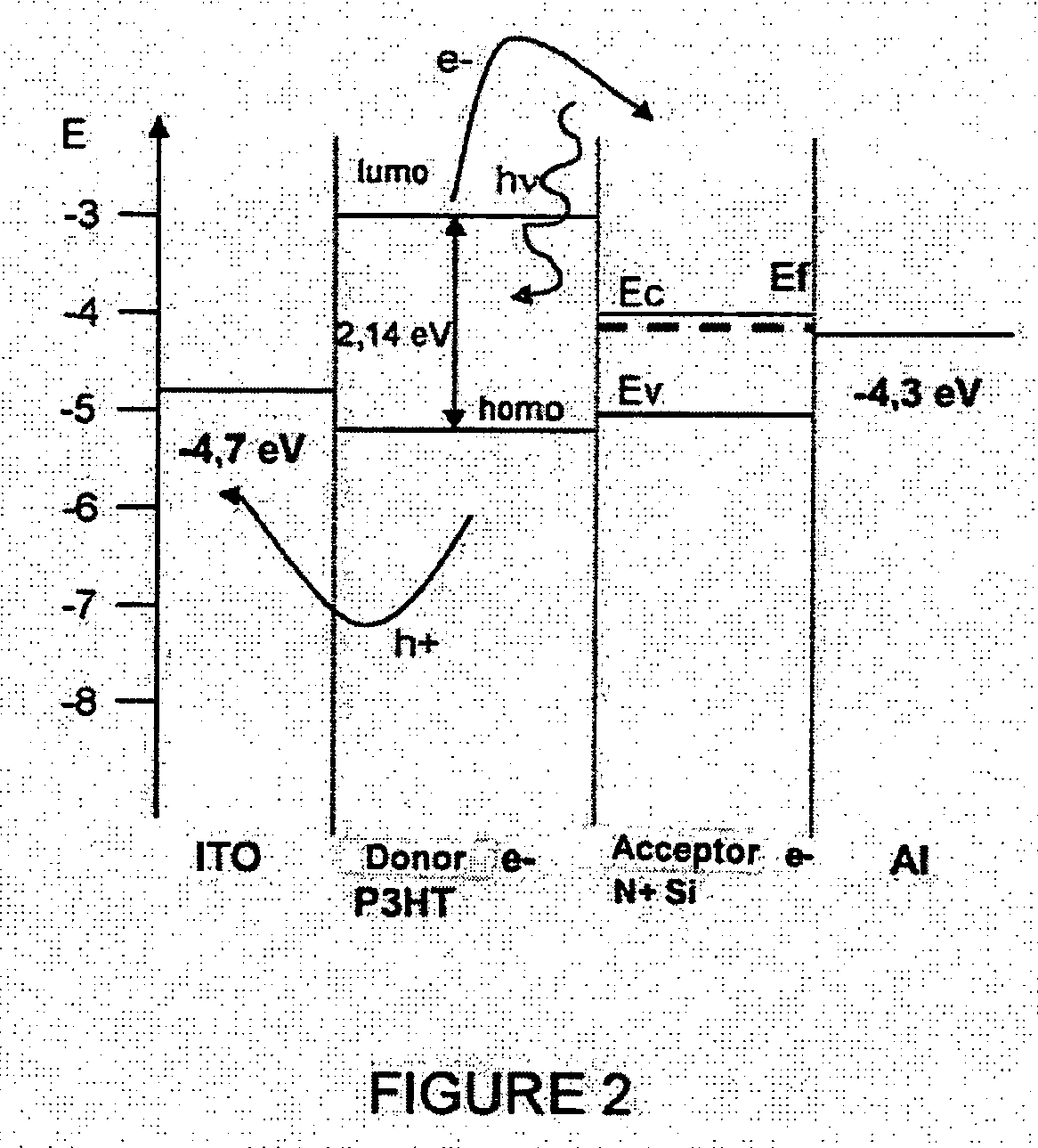Photoactive nanocomposite and method for the production thereof
a technology of photoactive nanocomposite and nanocomposite, which is applied in the field of photoactive nanocomposite, can solve the problems of poor charge mobility, not very stable, and limited usefulness of these systems
- Summary
- Abstract
- Description
- Claims
- Application Information
AI Technical Summary
Benefits of technology
Problems solved by technology
Method used
Image
Examples
first embodiment
[0054]In a first embodiment, the data shown in FIG. 2 are used, the active layer 3 is placed between a tin doped indium oxide (ITO) electrode 2 and an aluminum electrode 9.
second embodiment
[0055]In a second embodiment, the active layer 3 is placed between a tin doped indium oxide (ITO) electrode 2 and a gold electrode 10, FIG. 3 depicts the diagram of groups of these materials.
[0056]FIGS. 2 and 3 respectively show, in each case, the Fermi level of the materials making the nanowires 7, the organic compound 8 and the materials constituting the electrodes 9 and 10.
[0057]To optimise output of the cell, the materials used must be optimised. The following parameters can be adjusted:
[0058]1°—Doping of the nanowires: knowing the HOMO (High Occupied Molecular Orbital) and LUMO (Low Unoccupied Molecular Orbital) levels of Regioregular P3HT, the Fermi level of the nanowires 7 is altered by determining the dopant concentration for the silicon. The silicon nanowires 7 must be doped p-type electron acceptors (since the P3HT is an n-type electron donor).
[0059]2°—The nanowire diameter: it is known that the energy band gap varies as a function of nanowire 7 diameter. For diameters of ...
PUM
| Property | Measurement | Unit |
|---|---|---|
| Nanoscale particle size | aaaaa | aaaaa |
| Electrical conductor | aaaaa | aaaaa |
| Transparency | aaaaa | aaaaa |
Abstract
Description
Claims
Application Information
 Login to View More
Login to View More - R&D
- Intellectual Property
- Life Sciences
- Materials
- Tech Scout
- Unparalleled Data Quality
- Higher Quality Content
- 60% Fewer Hallucinations
Browse by: Latest US Patents, China's latest patents, Technical Efficacy Thesaurus, Application Domain, Technology Topic, Popular Technical Reports.
© 2025 PatSnap. All rights reserved.Legal|Privacy policy|Modern Slavery Act Transparency Statement|Sitemap|About US| Contact US: help@patsnap.com



